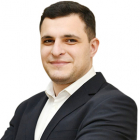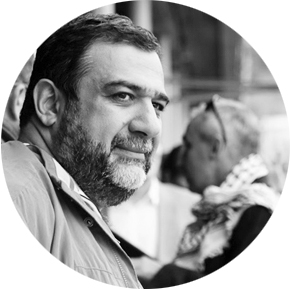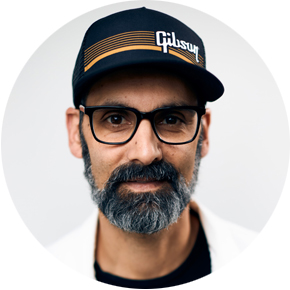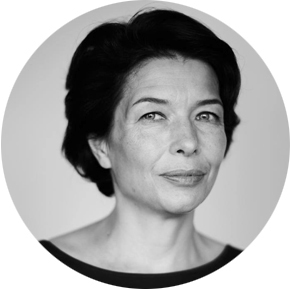- In our interview last February we talked about the field of philanthropy. Has your understanding of this term changed since then?
- Many things have occurred since that interview. For example, we established the IDeA (Initiatives for Development of Armenia) Foundation. My wife Veronica Zonabend and I founded the RVVZ Foundation in order to realize projects outside of Armenia. Later, we decided that the driver of projects within Armenia will be the IDeA Foundation.
In short, we established the IDeA Foundation in an effort to overcome scepticism and increase social confidence in Armenia. We want to support projects that will influence Armenia’s future and move it from “survival mode”, a mentality that currently dominates the culture, to a model for prosperity. In order to achieve a model for prosperity, people need to think and work 20 to 30 years ahead, so we are trying to restore people’s faith that the impossible is, in fact, possible if you establish mechanisms to implement complex, long-term projects.
To guide our work, we have formulated 7 basic principles to help us choose which projects to support and implement, including:
• Long-term vision and perspective;
• Large-scale and of symbolic importance;
• Global scope and collaboration;
• Yields ripple effect, where initial autonomous investments create scalable changes and have system-wide impact;
• Engagement of local resources in the implementation of projects;
• Self-sustainable after initial philanthropic investment;
• Best international practices and standards for design and realization of projects.
I’ll try to explain how these principles work by giving examples.
Long-term vision and perspective. None of the projects is designed to be completed in just a year or two. Their planning and success horizon spans 10 to 20 years. For example, the idea of the Tatev Revival project was born in 2003, it was launched in 2008, and it will be completed in 2017 when the Tatev Monastery marks its 1,111th anniversary. Similarly, the idea of creating the Dilijan International School arose in 2006 when we were seeking alternatives to educate our children. Then, in 2010, the President of Armenia planted a symbolic tree at the site of the future school, in 2014 the school will welcome its first students, and in 2023 the school will be operating at full capacity. By undertaking such long-term projects we want to demonstrate that the future of the country cannot be built in two or three years. It takes decades of hard work.
Large-scale and of symbolic importance. Over $ 80 million will be invested into the Tatev Revival Project by the founders of the project, the Government of Armenia, and individual donors from around the world. This is a considerable amount. That being said, the scale of the project is measured not only by the amount of philanthropic investment, but also by improvement in the quality of life in the region. We are pleased that since October 2010 over 140,000 people have used the aerial tramway leading to Tatev Monastery. That is a significant number indeed.

Ruben Vardanyan.
Sberbank CIB:
Tourism development requires infrastructure development, which creates new business opportunities and jobs for the local population. In the case of the Dilijan International School, $ 150 million will be invested in the construction of the campus, infrastructure, and equipment. We will attract yet more contributions in the future, which will cover scholarships and grants for 70% of the student body. These kinds of projects are important in the local context, but also on the international stage, because they put Armenia on the map. For example, children from at least 60 different countries will study at the Dilijan International School.
Equally impressive, the Wings of Tatev is registered in the Guinness Book of World Records as the world's longest non-stop reversible aerial tramway.
Global scope and collaboration. This is one of the key principles. It is very important to understand that these are not projects owned by Ruben Vardanian. Donors to the Tatev Revival Project include Armenians, Russians, and Americans, as well as Kurds, Indians, and Jews. Overall 140 people from 18 countries are financing the project.
The criterion of our success is not the fact that we have managed to build the longest aerial tramway in the world, but the fact that a significant portion of the donors of the Tatev Revival Project are supporting the Dilijan International School project, too. As more people support the work of the IDeA Foundation, we are more convinced of the legitimacy and appeal of our ideas.
This principle is inextricably linked to two other principles: that projects be large scale and carry a multipler effect. Many of those who take part in the realization of projects in Armenia have no ties to the country. Many of them have never been here before, yet they come and become friends of Armenia.
Yields ripple effect, where initial autonomous investments create scalable changes and have system-wide impact. The basic goal of the Tatev Revival Project is inherent in the name of the project: to restore this gem of medieval Armenian architecture and one of the most important religious, educational, and cultural centres in Armenia’s long history. Additionally, as we work toward this goal we are addressing many other vital objectives as well. It is already apparent that the construction of the Wings of Tatev cableway serves as a catalyst of development for tourism in the region. Before the realization of the project only a few dozen tourists visited the monastery each day, while today the figure is a few hundred each weekday and sometimes 1,000 on weekends.
Ten new hotels have opened in Goris in recent years, which is clear evidence of the economic ripple effect of our project. Currently, we are working on new tourism products for the region, such as hiking, cycling, and rock climbing tours. The revival of Tatev has a significant impact on nearby villages, because it creates opportunitiesto make a decent living.
Another very important aspect of the Tatev Revival project is that it providesa more convenient and pleasant route to Artsakh. The road from Yerevan to Stepanakert can be quite tiring, so many people, including local Armenians, for go the journey altogether. Today, the development of tourism infrastructure allows Armenian travellers and foreign tourists to spend a restful night in Goris, enjoy the beauty of Tatev, and then continue their journey to Artsakh with ease and memories.
The construction of the Dilijan International School is also a project with multiple levels of impact. Firstly, Armenia will be counted among the countries with international schools that meet modern educational standards. Secondly, the youth who will study in Dilijan will be able to further their studies at the best universities in the world. Their time in Armenia will enable them to become ambassadors of our country, contributing to greater awareness about Armenia’s people, culture, and contributions to the world. Thirdly, the realization of such a large-scale project will bolster the development of small and medium enterprises in Dilijan. I could go on, but I wanted to highlight the most obvious aspects.
Engagement of local resources in the implementation of projects. This is an important principle but at the same time it is one of the most challenging to realize. I wouldn’t want locals to see our projects as something imposed from the outside. We want residents of Tatev and Dilijan to have a sense of ownership of the work and to perceive it as a part of their lives. Let’s take, for example, the Cascade Complex in Yerevan. The reaction to the open-air sculptures was initially reserved, and at times even hostile. At this point, though, they have become part of the landscape of Yerevan and if anyone decided to remove the Botero “Cat” sculpture, I’m certain that many would ask with concern, “Where is our cat?”
Self-sustainable after initial philanthropic investment. It is important to understand that the initial significant capital investment necessary to establish an infrastructure is a philanthropic contribution and that it will never be returned to donors. Our goal is to create mechanisms for the gradual transition of the projects to self-sufficiency, so that projects can exist without donor contributions. For example, the aerial tramway in Tatev is an expensive engineering-technical construction and the revenue from ticket sales is directed toward its maintenance.
Best international practices and standards for design and realization of projects. Our projects in Armenia meet the highest global standards. The Tatev cableway was built by an Austrian-Swiss company Doppelmayr/Garaventa, which is the world’s leader in thefield. As for the Dilijan International School, British architect Tim Flynn and the Russian RD Management Company have designed Armenia’s first large complex of public buildings that meet the most modern environmental standards and perfectly complement the landscape of Dilijan National Park. The Board of Trustees of the school is comprised of internationally recognized people of various nationalities. This is additional evidence that we are setting high standards for our endeavours on every level.
As for the field of philanthropyin general, it’s a relatively new field, which means there are only a few people who approach it professionally. Very often philanthropy is perceived as an emotional outburst of sorts - an out-dated understanding of charity - not a professional activity. People don’t understand that this is serious work, just like commercial pursuits. Of course many people have learned it. Some people adopt the concept faster, some slower, but in any case people’s understanding of philanthropy is improving.
- You have frequently stated that for you business is not only a way to earn money but also a means by which to achieve positive changes. Do your projects in Armenia promote change for the better?
- I hope they do in some way. I think even small changes are important and I am happy that much has been achieved so far. I’m a restless man by nature and very demanding of myself and of those around me, so I worry that things are moving too slowly. At the same time, I understand that the speed of development in Armenia is very slow and we are working against inertia. In any case, I hope we will achieve the goals we’ve established for the coming decades.
- There exists a very fashionable approach today – crowdsourcing – through which mainly young people raise money through social networks to help sick children or address some local community issue. Can wealthy people help such enthusiasts create a framework within which they will be able to realize their goodwill?
- I can say we already have an example of crowdsourcing. Several years ago people responded to the initiative of Yerevan Magazine to take part in the restoration of the David of Sasoun monument and the small fountain in Republic Square in Yerevan. Although it’s hard to meetlarge-scale needs through crowdsourcing, I think it’s a worthy and important undertaking. There are, of course, differences between crowdsourcing and the broader field of philanthropy, as crowdsourcing is just one of the strategies.

Ruben Vardanyan.
Yerevan Productions/Arnos Martirosyan.
- In our last interview you said that the Armenia-2020 project was an attempt to shake up the collective mentality of Armenia. Unfortunately, the attempt was not a success, since the development model did not promote discussions amongst policy makers, media,or the public as a whole.
- The answer is quite simple: we have to keep shaking things up, because nothing changes on the first try. I don’t agree with the statement that Armenia-2020 was fruitless though. The notion of public-private partnership, which was an inherent part of the project, was realized through the establishment of the National Competitiveness Foundation of Armenia. Let’s not forget either that the Government of Armenia invested $ 20 million into the Tatev Revival project, which was a significant contribution. And the restoration of Tatev Monastery is a joint endeavour of private investors, the Armenian Apostolic Church, and the government, where the National Competitiveness Foundation of Armenia serves as the coordinator between the project participants.
Fundamentally, IDeA Foundation is a by-product of the Armenia 2020 project. So, in fact, many ideas and approaches we once discussed gradually transformed into concrete projects.
- In your opinion, what is lacking most in Armenia today?
- On the one hand, I think it would be out of place for me to say, since I don’t live here. On the other hand, as a person who visits Armenia regularly and observes the environment and processes as an outsider, I see several fundamental problems.
Though it’s hard to find jobs in Armenia, it is also extremely difficult to find professionals ready to fully commit themselves to projects. Yet, many people are willing to leave for Moscow or anywhere else to take much less attractive jobs.
I’ve noticed that today’s Armenian society is dominated by a somewhat distorted perception of success: people think that the successful person is not the one who works hard and earns money, but the one who has money and doesn’t work. In other words, the important factor is not the knowledge, but the diploma. This is a very depressing phenomenon. Personal and professional relationships are also often mixed here. As a result, the discussion of a particular business issue often turns into lots of loud negotiations.
Another issue exists as well: the richest people in the country aren’t the largest taxpayers, because their businesses are built on connections to the authorities. There are different rules for different groups, which are defined not by talent, intellect, and the willingness to work hard, but by ties to people with power. There are, of course, some good success stories, too, and I am happy that some Armenian businessmen participate in the realization of our projects.
I think areas on for these issues is that people have lost faith in the future andin their dreams. Armenia is stuck in the survival mode today. When you live with that kind of mentality, you don’t think about long-term perspectives. Even the elite lack a long-term perspective, which is why at times the most important decisions are made without thinking about the future, as if we live here and today only.
This is especially apparent within urban development. Many tall buildings are being built in Armenia today, mainly in the centre of the cities. Such a rapid saturation of space with a large number of structures will inevitably impact both the quality of construction and the related infrastructure. This doesn’t even address the issues of aesthetics, convenience, or adaptability of these houses to people's lives, particularly the lives of children. New buildings should fit into the urban environment, and help the city preserve its coherence and identity. This can be done only if you really love your city, care for it, and think about its future. Unfortunately, I don’t feel that people love their city and their country. I don’t feel that they are proud of it.
In order to turn the tide, we have to increase confidence first of all, and then expand people’s understanding of planning beyond just a few years. Unfortunately, the survival mode mentality that exists in Armenia today doesn’t allow for it. This is the problem of not only authorities but also the society in general. Someone builds a small vendor kiosk, then they attach a veranda to it, then a balcony, then it turns into a shop, and suddenly it transforms into an empire, yet it is allpatch work.
Over the past centuries Armenians have lived under the yoke of foreigners, and it is one of the reasons that we are very good mediators and assistants, but we have seldom become the heads of large corporations. The survival mode is pervasive, but we don’t have a model for prosperity, which requires will, ambition, and risk.
- Can the model change in the foreseeable future?
- Everything is possible. This is a matter of vision, will, and a clear plan of action. The mission of IDeA is the effective transformation of people’s way of thinking, which is instrumental in moving toward a model for prosperity. It requires a thoughtful plan of action and cannot be accomplished within a day.
Ara Tadevosyan talked with Ruben Vardanian.


























Comments
Dear visitors, You can place your opinion on the material using your Facebook account. Please, be polite and follow our simple rules: you are not allowed to make off - topic comments, place advertisements, use abusive and filthy language. The editorial staff reserves the right to moderate and delete comments in case of breach of the rules.